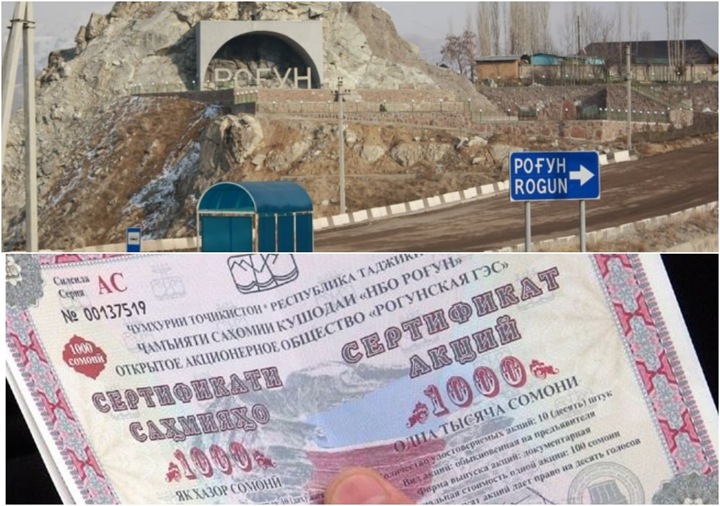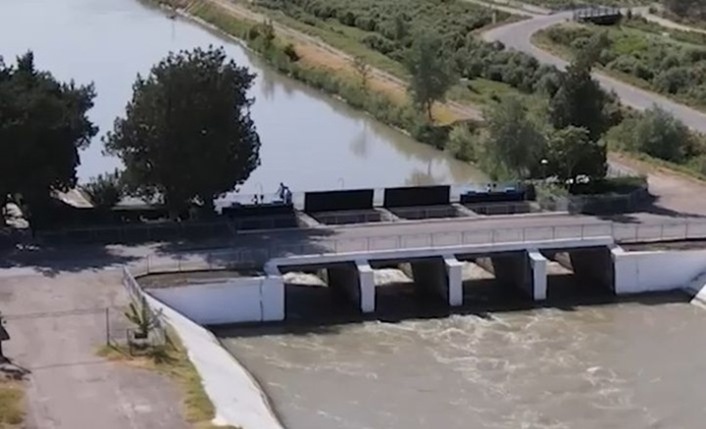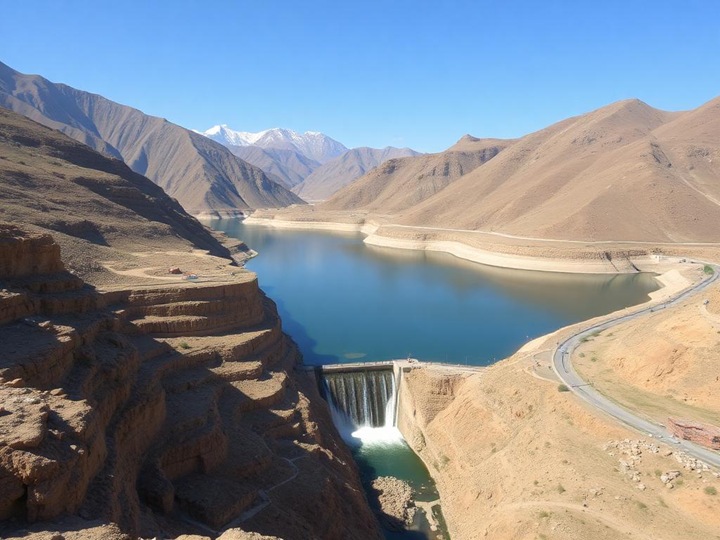The shares of Rogun Dam were sold 15 years ago: should we expect dividends?
In Tajikistan, 15 years ago, on January 6, 2010, in order to continue the construction of the Rogun hydroelectric power station, a wide sale of shares to the public began. In total, 890 million somoni were collected from the sale of shares. What happened to these funds, and when will the owners of the shares be able to benefit from them?

The government has issued 5 million securities worth 6 billion somoni. For this purpose, more than 580 points of sale of shares were opened in branches of the state bank “Amonatbonk” throughout the country. Citizens and legal entities of the Republic could purchase shares for cash or through bank accounts.
By presidential decree, the sale of shares was supposed to be voluntary, but in practice there were cases when the authorities forced subordinates to buy securities. Even students were forced to purchase shares worth 100 somoni.
The shares were sold at face value of 100, 500, 1000 and 5000 somoni. Only shares with a face value of 5000 somoni were registered, the rest were ordinary. The difference between registered and ordinary shares was that the name of the buyer was indicated on the registered shares, and he had no right to sell them to another person, and the sale process had to be carried out through the stock exchange.
The government reported that 22 thousand registered shares and 2 million ordinary shares were sold.
What did the funds go to?
It should be noted that in 2010 the campaign for the sale of shares and certificates of shares of JSC Rogun Dam ended only after the intervention of the representative office of the International Monetary Fund (IMF). The IMF warned Tajikistan that raising such a large amount of funds could slow down the country’s economic growth by 1% and reduce investment in the private sector.
“This process may temporarily slow down the pace of economic growth, as the population reduces their spending on buying shares, and companies reduce their investments,” Axel Schimmelpfennig, head of the IMF mission in Tajikistan, said in April of the same year at a meeting with Emomali Rahmon.
According to available data, two months after the collection of funds for shares, 2% of the total amount was “absorbed” by inflation. Subsequently, the Ministry of Finance of the Republic came to the conclusion that 175 million somoni of these funds will be transferred in the form of loans to five commercial banks of the country with an annual interest rate of 10%.
A year after the loans were issued, the then Finance Minister Safarali Najmiddinov announced that loans placed in commercial banks brought 11.9 million somoni in profit.
According to the authorities, the collected funds have already been spent – they were used to purchase equipment for the construction of the facility.
Creation of JSC “Rogun Dam”
As a result of the sale of shares, the Rogun Dam joint-stock company was established, which today is considered one of the largest joint-stock companies in Tajikistan.
According to the company’s charter, the proceeds from the shares of the Rogun Dam will be paid only after the station is fully put into operation. Until then, shareholders cannot claim profits or sell these shares to the company.
Only after the complete commissioning of the 6 units of the Rogun Dam and the official completion of its construction, the owners of shares will be able to extract income from these securities.
A meeting of Rogun shareholders is held every year, at which the project management reports to the shareholders on the work done.
Other sources of funding
Initially, the government planned to build the Rogun Dam at the expense of domestic funds, including the sale of shares. However, it was later announced that investments would be attracted for the construction of this facility.
In 2021, the Government of the republic turned to international partners to raise capital.
Emomali Rahmon said in an interview with the builders of the Rogun Dam that in the period from 2008 to 2024, the government allocated more than 42.5 billion somoni for the construction and restoration of the Dam from the state budget and other sources.
In particular, in January 2023, the Board of Directors of the World Bank approved irrevocable financial assistance in the amount of $15 million to improve the efficiency of the Rogun Dam project. In February 2023, an agreement was reached with the Islamic Development Bank to finance the project in the amount of $150 million, including the grant part.
In May 2023, the Asian Infrastructure Investment Bank (China) announced a soft loan of $500 million. In December 2023, the Saudi Development Fund signed an agreement to provide a $100 million loan to continue the construction of the Rogun Dam.
In 2024, the World Bank will allocate $350 million in grants for the construction of the Rogun Dam, the Islamic Development Bank – $150 million, Arab funds – $400 million, and the Asian Infrastructure Investment Bank – $270 million.
In addition, an agreement was signed to attract a preferential loan of $500 million with the Asian Infrastructure Investment Bank (China).
Emomali Rahmon announced that the next unit of the Rogun Dam will be commissioned in 2025.
The President noted that over the past two years, more than 9 billion somoni have been spent from the state budget on the construction of Rogun.
According to him, today more than 50% of construction works at the Rogun Dam have been completed.
“The government of the country is taking all possible measures to finance the construction of this strategic facility in a timely manner,” Emomali Rahmon added.
How much does the project cost?
Since 2008, the cost of the Rogun Dam project has changed several times. If in 2008, at the time of the resumption of the project, its cost was estimated at $ 3 billion, then in 2016, during the international tender for the selection of a general contractor for the construction of the dam, the cost of the facility was announced at $3.9 billion.
In 2022, the Ministry of Energy of the Republic announced that more than $5 billion would be required to continue the construction of Dams.
According to the Ministry of Energy of Tajikistan, $1 billion is required annually to continue construction work within the approved schedule, and $6.2 billion is needed to fully implement the project.
The launch of the last unit of the station is scheduled for 2029. The full completion of the construction of the station is envisaged in 2033.
Shoira Kudrat (“ASIA-Plus”)


